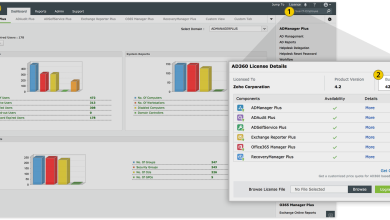A Case Study on Empowering Employees Through Credential Management

Attributed to: Arun Kumar, Regional Director of APAC for ManageEngine.

For some time now, many organisations have claimed they will go passwordless as convenience has become the top priority when it comes to boosting employee productivity and performance. Yet passwords remain the primary form of authentication in Gmail, Outlook, and other major enterprise applications.
Unlike the algorithms in biometric scanners and facial recognition, passwords do not accept a margin of error. Even a single wrong character prevents users from accessing resources. This feature is what makes passwords stand the test of time, even 62 years after they were first used on computers. Passwords also offer other advantages that make them the most effective security measure across organisations. For example:
- Passwords are backwards compatible, meaning that they work on any system and comply with the policies set by IT teams.
- In case of a breach, passwords can be changed.
- Passwords generally do not carry personally identifiable information.
All these advantages—combined with their better usability and cost-effectiveness as well as the advent of IoT devices—mean that passwords are not going away any time soon. Passwords have remained a ubiquitous form of authentication for several decades now, despite the introduction of several alternate solutions. Biometrics, smart cards, and other forms of authentication have certainly added another layer of security, but they cannot replace passwords entirely.
However, passwords have a critical drawback—password mismanagement can result in security breaches, a poor employee experience, and a loss of customer and stakeholder trust. Further exacerbating matters, users forgetting passwords prompts IT teams to quickly reset them to maintain operational consistency. This only serves to overburden agents and take their focus away from more critical issues, like service disruptions and cyberthreats.
Therefore, managing and monitoring passwords is still essential. Companies must ensure that users create strong passwords, that they are not reused across platforms, and that they are changed regularly. Passwords must also be encrypted and stored securely to prevent unauthorised access. Organisations can free themselves of the shackles of manual password management through password management solutions that empower users with self-service resets and single sign-on (SSO) access.
How Tele-centre solved its password management issues
Tele-centre Services Pte. Ltd. was incorporated in 1999 with the goal of providing customer experience management solutions. Specifically, it enables client outsourcing of call centre, help desk, email, web chat, and social media operations. Its client base consists of government and corporate entities, including those within the public transportation, telecommunications, banking and finance, retail, insurance, petroleum, and IT sectors.
Some of the issues the company faced, according to Philip Chua, head of IT, included the lengthy process of responding to password service requests manually and difficulties managing user accounts in Active Directory (AD). These issues made it impossible for his support teams to take on proactive, strategic, and time-critical tasks. Looking to simplify these processes, Chua chose to implement ManageEngine AD360. The self-service password management capability of AD360 allows for holistic management of employee passwords at a reasonable price.
Through this solution, Tele-centre is able to give its employees the ability to reset their own passwords directly without having to rely on the support teams. Not only that, AD360 also provides SSO, which allows the company to synchronise passwords across various apps so that users will not feel overwhelmed from using so many credentials. With AD360’s Password Policy Enforcer and expiration notifier, employees are encouraged to develop password best practices that can decrease the risk of attacks.
Leveraging AD360, Chua was able to cut the time spent on administration tasks by 50%, which has eased the support teams’ workloads and allowed the teams to be redistributed to other critical focus areas. Chua is also able to harness audit reporting to review which passwords are active and which are no longer in use, allowing for easy decommissioning and deletion of passwords from databases. Through this, Tele-centre is able to lower the risk of security breaches associated with credential theft.
What can other organisations take from this?
Despite people’s opinions that passwords are obsolete, the opposite, at least for the foreseeable future, seems to be the case. As things stand, passwords remain the first line of defence in vetting users and keeping out intruders. But their effectiveness hinges on proper management that ensures unauthorised users do not gain access to protected resources.
With the right solutions integrated into their tech stacks, employees can have control over their own passwords, allowing them to work seamlessly and reducing operational downtime. This, in turn, can create a positive working experience while maintaining robust safeguards for critical assets and operations. As another World Password Day comes and goes, every organisation should strive to make employees integral to reinforcing cybersecurity without hampering their ability to do their jobs.




